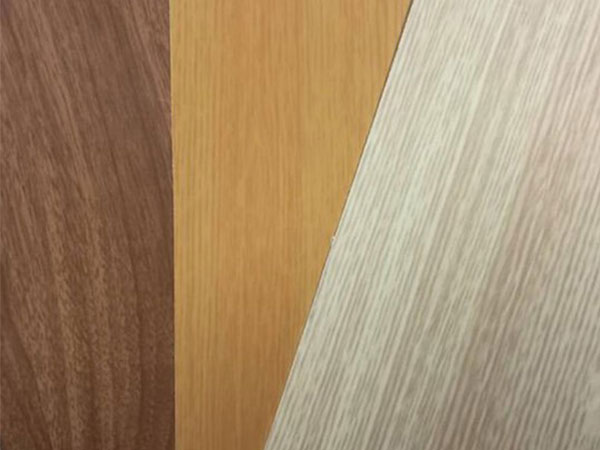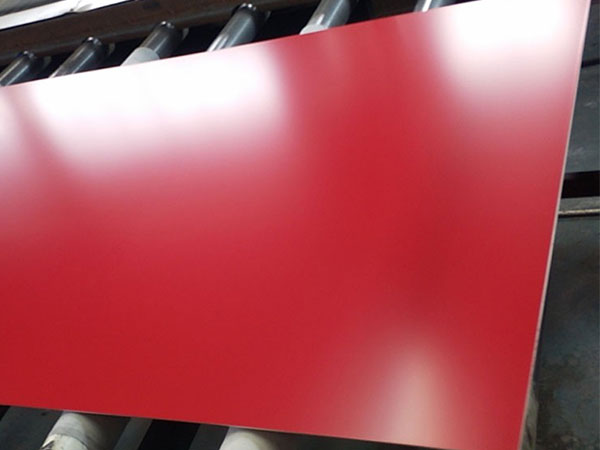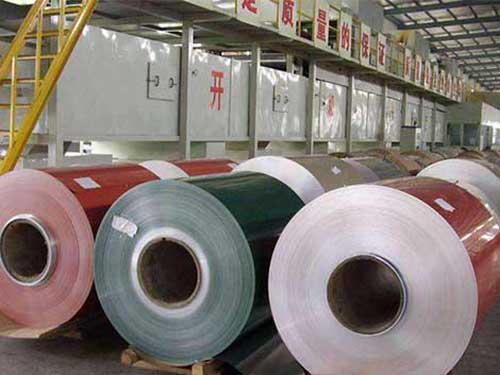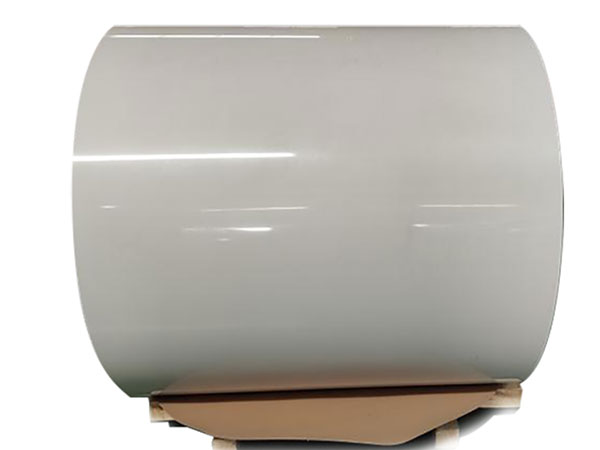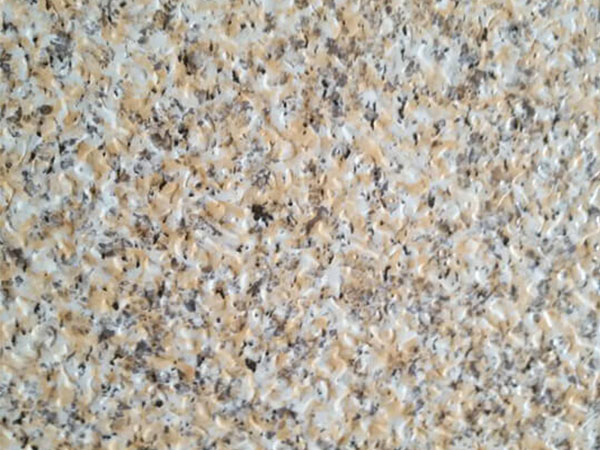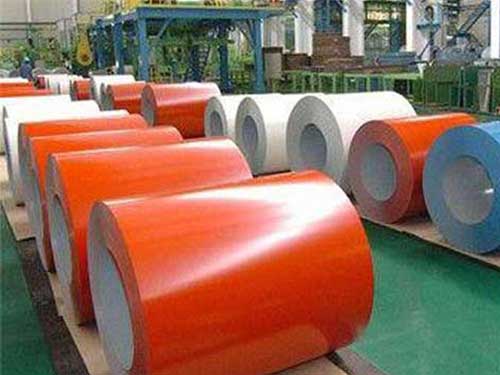Black aluminium sheet is a coated aluminium product where a thin, durable black finish is applied to aluminium substrate to combine the metal’s lightweight, strength, and corrosion resistance with the aesthetic and functional benefits of a black surface.
Functions and Benefits
- Aesthetic finish: Uniform, deep black appearance suitable for architectural facades, interior design, signage, and consumer goods.
- Corrosion resistance: Protective coating (like PVDF, polyester, anodized or powder coatings) improves resistance in outdoor and humid environments.
- Reflectivity control: Black surface absorbs light and reduces glare or, with matte finishes, controls reflections—useful in display housings and stage equipment.
- UV resistance: High-quality coatings (e.g., PVDF) provide long-term color and gloss retention under sunlight exposure.
- Weather durability: Coatings protect against chalking, fading, and environmental degradation.
- Formability and fabrication: Aluminium core remains lightweight and workable—can be cut, bent, folded, and joined using common metalworking processes.
- Thermal and electrical properties: Retains aluminium’s thermal conductivity and electrical characteristics (coating layer is non-conductive and thin).
- Lightweight strength: Ideal where weight reduction is important while maintaining structural integrity.
Typical Applications
- Architecture and construction
- Exterior cladding and curtain walls
- Soffits, fascias, canopies, louvers
- Decorative panels and interior wall covering
- Transportation
- Vehicle bodies and trim for automotive, rail, marine applications
- Interior panels and equipment housings
- Signage and display
- Outdoor signs, signboards, lightboxes (with backlighting considerations)
- Exhibition panels and POS displays
- Consumer electronics and appliances
- Casings, bezels, and decorative trims for TVs, monitors, refrigerators, ovens
- Furniture and fixtures
- Cabinet faces, shelving, decorative metal furniture
- Industrial equipment
- Enclosures, control panels, acoustic panels (with suitable coatings)
- Aerospace and defense (select grades/coatings meeting strict specs)
- Photographic/stage equipment
- Light-absorbing mounts, housings, and backdrops (matte black finishes)
Surface Treatment Options for Black Finishes
- PVDF (Polyvinylidene fluoride) coating: Excellent UV resistance, color retention, weatherability. Commonly 2-coat or 3-coat system with primer and topcoat.
- Polyester paint: Economical, good color variety; lower UV/weather resistance than PVDF.
- Anodizing + black dye: Durable, integral finish with good abrasion resistance; dye may fade vs. PVDF.
- Powder coating: Thick, durable finish with good mechanical resistance; performance depends on resin type (epoxy, polyester, or hybrid).
- Electrostatic painting: Common for appliances and interior parts.
- Pre-painted Aluminum (coil-coated): High-volume production, consistent finish; often uses PVDF or polyester topcoats.
- High-build coatings and anti-graffiti topcoats: For vandal-prone environments.
Parameters and Technical Data
Below are common technical parameters for black aluminium sheets. Specific values depend on alloy, temper, coating system, and manufacturer.
| Parameter | Typical Values / Notes |
|---|---|
| Base material alloys | 1050, 1100, 3105, 3003, 5005, 5052, 6061 (substrate selection depends on strength, formability, corrosion resistance) |
| Thickness range (substrate) | 0.2 mm – 6.0 mm (coated sheets commonly 0.3–2.0 mm) |
| Coil/Sheet width | 600 mm – 1600 mm (custom widths available) |
| Coating thickness (dry film) | Polyester: 15–25 μm; PVDF: 25–45 μm; Powder coat: 40–120 μm; Anodizing: 5–25 μm |
| Surface finish | Glossy, semi-gloss, matte, textured (like stucco, stone effect) |
| Color tolerance | ΔE ≤ 2–3 (measured per ASTM or ISO methods for top-tier coatings) |
| Adhesion | Cross-cut adhesion ≥ ISO 2409 0–1 or ASTM D3359 4–5B (varies by system) |
| Salt spray resistance | Polyester: up to 500 h edge-seal dependent; PVDF: 1000–2000 h (per ASTM B117 or ISO 9227) |
| Humidity resistance | Per ASTM D2247 / ISO 6270 — PVDF shows superior results |
| Gloss retention | Measured after 1000-2000 h UV exposure; PVDF retains >70–80% |
| Scratch and hardness | Pencil hardness or Konig: depends on coating (powder > liquid coatings generally) |
| Formability | Bend radius depends on substrate alloy/temper and coating; typical minimum R = 1–3t (t = thickness) with proper tooling |
| Fire performance | Aluminium is non-combustible; coatings should meet local fire codes (e.g., EN 13501 for Europe) |
| Thermal expansion | α ≈ 23–24 x10^-6 /°C (aluminium substrate) |
| Weight | 2.70 g/cm3 (aluminium) — approx. 2.7 kg/m2 per mm thickness (substrate only) |
Alloy Chemical Composition and Properties
Common alloys used as substrates for coated black aluminium sheets include 1050/1100 (commercially pure), 3003/3105 and 5005 series. The table below shows typical chemical compositions and general properties.
| Alloy | Main alloying elements | Typical Chemical Composition (wt%) | Typical Properties |
|---|---|---|---|
| 1050 / 1100 | Al (≥99.0%) | Si ≤ 0.25, Fe ≤ 0.4, Cu ≤ 0.05, Mn ≤ 0.05, Mg ≤ 0.05, Zn ≤ 0.05, Ti ≤ 0.03, Others ≤ 0.05 | Excellent formability, high corrosion resistance, low strength |
| 3003 / 3105 | Mn (~1.0%) | Mn 1.0–1.5, Si ≤ 0.6, Fe ≤ 0.7, Cu ≤ 0.1, Mg ≤ 0.05 | Good formability, moderate strength, widely used for coil coating |
| 5005 | Mg (~0.7–1.1%) | Mg 0.7–1.1, Si ≤ 0.4, Fe ≤ 0.7 | Good corrosion resistance, commonly used for architectural applications |
| 5052 | Mg (~2.2%) | Mg 2.2–2.8, Cr 0.15–0.35, Fe ≤ 0.4, Si ≤ 0.25 | Higher strength, excellent corrosion resistance (marine environments) |
| 6061 | Mg & Si | Mg 0.8–1.2, Si 0.4–0.8, Cu 0.15–0.4, Cr 0.04–0.35 | Heat-treatable, higher strength, good machinability (used where higher mechanical properties needed) |
Note: Actual chemical limits refer to relevant standards (e.g., ASTM B209, EN 573). Check supplier data sheets for exact compositions.
Tempering (Tempers) and Mechanical Properties
Alloy temper affects formability and strength. Typical tempers used for coated sheets:
| Alloy | Common Tempers | Typical Tensile Strength (MPa) | Typical Yield Strength (0.2% Rp0.2) (MPa) | Elongation (%) |
|---|---|---|---|---|
| 1050 / 1100 | O (annealed) | 40–70 | 15–40 | 30–45 |
| 3003 / 3105 | H14, H16, H22, O | 70–150 | 60–130 | 10–35 |
| 5005 | H14, H16 | 100–170 | 70–150 | 8–20 |
| 5052 | H32, H34, H111 | 150–290 | 90–240 | 5–18 |
| 6061 | T6, T4 | 240–310 | 120–275 | 8–17 |
Notes:
- H1x/H2x indicate strain-hardened tempers with varying degrees; H14 is quarter-hard, H16 half-hard, H24 etc.
- O = annealed (maximum formability).
- T tempers indicate heat treatment; use with caution for coil coating because some tempers affect coating adhesion and forming.
Implementation Standards and Test Methods
Manufacturers and specifiers commonly refer to the following standards for coated aluminium sheet. Compliance ensures predictable performance.
- Material and alloy standards
- EN 573 / EN 485 / EN 1396 (Europe)
- ASTM B209 (Aluminium and Aluminium-Alloy Sheet and Plate)
- JIS H4000 (Japan)
- Coil coating and paint systems
- EN 12206 (painted coatings on steel and aluminium)
- AAMA 2603 / 2604 / 2605 (USA: performance classes for organic coatings on aluminium)
- QUALICOAT (seal for pre-painted aluminium)
- Surface and adhesion tests
- ASTM D3359 (adhesion, tape test)
- ISO 2409 (cross-cut test)
- ASTM D714 (blistering)
- Weathering and UV exposure
- ASTM G154 (UV fluorescent condensation devices)
- ASTM G151 / G154; ISO 4892 (artificial weathering)
- ISO 11341, ISO 2810 (natural weathering)
- Corrosion tests
- ASTM B117 / ISO 9227 (salt spray)
- ISO 6270 (humidity)
- Mechanical testing
- ASTM E8 / EN 6892 (tensile tests)
- Fire safety and reaction to fire
- EN 13501 (classification of construction products)
- Surface cleanliness and pretreatment
- ISO 16232 / internal procedures for degreasing, chemical conversion coatings (chromate/ non-chromate)
Handling, Fabrication, and Limitations
- Bending and forming: Use appropriate tooling, die radii, and lubricants to avoid cracking of the coating. For tight bends, consider pre-paint forming (forming before coating) or select alloys/tempers with higher ductility.
- Cutting and joining: Mechanical fasteners, riveting, and adhesives are commonly used. Welding is possible (depending on alloy) but will damage coatings locally—recoating or local corrosion protection may be required.
- Edge protection: Cut edges expose bare aluminium and may require sealants or edge coatings to prevent corrosion and galvanic interactions.
- Surface repair: Minor scratches may be repairable with touch-up paints specifically matched to the coating system; deeper damage may need panel replacement.
- Thermal limits: Coating systems have maximum service temperatures (PVDF commonly up to ~150°C short-term; continuous lower). Check coating datasheets.
- Chemical exposure: Some coatings resist acids/alkalis better than others—select coating chemistry based on exposure (industrial environments, marine salts, chemicals).
Selection Guide — How to Choose the Right Black Aluminium Sheet
- Application environment:
- Outdoor/architectural: PVDF-coated 5005/3105 alloys recommended for long-term color and weather resistance.
- Interior/low-cost: Polyester-coated 3003/3105 sufficient.
- Marine: 5052 with appropriate coating or anodize for superior corrosion resistance.
- Formability needs:
- High forming: choose 1xxx (annealed) or 3xxx alloys in O temper or soft H tempers.
- Structural strength: use 5xxx or 6xxx series with appropriate temper.
- Finish appearance:
- Matte vs gloss: choose coating formulation; textured coatings for scratch concealment.
- Color consistency: ensure supplier provides ΔE data and batch control.
- Fire/code requirements:
- Check local building codes for façade systems; choose non-combustible substrates and approved cladding systems.
- Longevity vs cost:
- PVDF gives best longevity and highest cost; polyester is economical; powder coatings give durable mechanical protection.
Typical Product Specification Example (Sample)
- Substrate: 5005 alloy, H14 temper
- Thickness: 1.0 mm
- Width: 1250 mm
- Coating: PVDF (Kynar 500 or Hylar 5000), 3-coat system (chromate/non-chromate pretreatment + primer + topcoat)
- Topcoat thickness: 25 μm; primer: 10 μm; total DFT: 35 μm
- Color: Black (RAL 9005) — gloss 10% (matte)
- Adhesion: Cross-cut ISO 2409 Class 0
- Salt spray: No substrate corrosion after 1000 h (ASTM B117)
- Warranty: 20-year facade coating performance (subject to environmental limitations)
Testing and Quality Assurance
Quality control typically includes:
- Coating thickness measurement (magnetic/non-magnetic gauges or eddy current)
- Adhesion and cross-cut tests
- Color and gloss measurement (spectrophotometer/gloss meter)
- Mechanical testing of substrate (tensile, bend tests)
- Corrosion/weathering tests per project requirements
- Dimensional checks (thickness, width, flatness)
- Packaging and shipping checks to avoid damage
Environmental and Sustainability Considerations
- Recyclability: Aluminium is highly recyclable; coated aluminium can be recycled though separation of organic coatings improves recycling quality. Many recyclers accept painted aluminium.
- Lifecycle: Long-lasting coatings like PVDF reduce maintenance and replacement frequency, lowering lifecycle environmental impact.
- VOCs and coatings: Modern coil coatings and powder systems have low VOC emissions. Seek suppliers with environmental certifications or compliance with local regulations.


